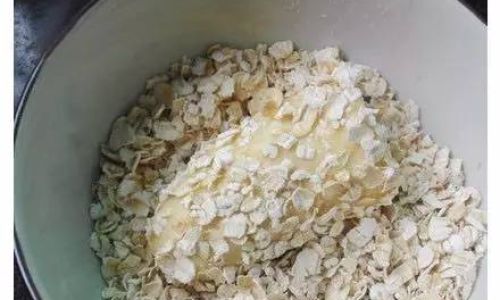Introduction
The world of nuts is a rich tapestry of flavors, textures, and nutritional benefits, with hazelnuts standing out as a star due to their creamy texture and subtle, sweet taste. Whether enjoyed on their own, incorporated into desserts, or used as an ingredient in various culinary dishes, hazelnuts offer a delightful experience for the palate. However, maintaining their freshness can be a challenge, especially for those who like to buy in bulk or store them for extended periods. One common question that arises among hazelnut enthusiasts is whether fresh hazelnuts can be stored in the refrigerator for preservation. This article delves into the intricacies of storing hazelnuts, exploring the suitability of refrigeration, and providing practical tips to ensure your hazelnuts retain their optimal quality.

Understanding Hazelnuts
Before discussing storage methods, it’s crucial to understand the basic characteristics of hazelnuts. Hazelnuts, scientifically known as Corylus avellana, are tree nuts native to temperate regions of the Northern Hemisphere. They are enclosed in a hard, woody shell and have a kernel that is edible and highly nutritious. Rich in healthy fats, proteins, fiber, vitamins, and minerals, hazelnuts are a staple in many diets for their numerous health benefits.
Freshness is paramount when it comes to hazelnuts, as stale nuts lose their flavor, texture, and nutritional value. Proper storage is essential to extend their shelf life and preserve their quality. Several factors influence the shelf life of hazelnuts, including moisture content, temperature, and exposure to air and light.
Moisture Content
Hazelnuts contain a certain level of moisture that contributes to their texture and flavor. Too much moisture can lead to mold growth and spoilage, while too little can make them brittle and rancid. Ideally, hazelnuts should be stored at a moisture content that balances preservation with taste. This balance is often achieved through careful handling and packaging.
Temperature
Temperature plays a critical role in the preservation of hazelnuts. High temperatures accelerate the oxidation process, leading to rancidity and loss of flavor. Conversely, extremely low temperatures can alter the texture and potentially cause freezer burn. Understanding these temperature dynamics is key to determining whether refrigeration is a suitable storage method.
Air and Light Exposure
Exposure to air and light can degrade the quality of hazelnuts over time. Oxygen can initiate oxidative reactions that cause fats to break down, leading to rancidity. Light, especially ultraviolet rays, can degrade the nutrients and pigments in hazelnuts, affecting their color and nutritional profile. Therefore, storing hazelnuts in airtight, light-blocking containers is crucial.
Can Fresh Hazelnuts Be Stored in the Refrigerator?

The question of whether fresh hazelnuts can be stored in the refrigerator for preservation is multifaceted. While refrigeration can slow down many spoilage processes, it’s not without its drawbacks when it comes to nuts. Here’s a detailed analysis:
Pros of Refrigerating Hazelnuts
-
Temperature Control: Refrigerators maintain a low temperature that can slow down the oxidation process and delay rancidity. This can be beneficial, especially in warm climates or during summer months where room temperatures can be high.
-
Moisture Regulation: In a properly sealed container, refrigeration can help maintain a stable moisture content, preventing the nuts from absorbing too much moisture from the environment or drying out excessively.
-
Pest Control: Storing hazelnuts in the refrigerator can also keep pests like insects and rodents at bay, as these creatures are less likely to invade cold spaces.
Cons of Refrigerating Hazelnuts
-
Texture Alteration: One of the primary concerns with refrigerating hazelnuts is the potential alteration of their texture. Cold temperatures can make the nuts harder and less pleasant to eat. Upon removal from the refrigerator, they may take time to return to a more desirable texture.
-
Condensation Risk: When hazelnuts are moved from a cold environment to a warmer one, condensation can occur on the surface of the nuts. This moisture can promote mold growth and spoilage if not dried promptly.
-
Flavor Changes: Refrigeration can sometimes cause subtle flavor changes in hazelnuts, making them less aromatic and slightly muted in taste.
Alternative Storage Methods

Given the pros and cons of refrigerating hazelnuts, it’s worth exploring alternative storage methods that might better preserve their quality.
-
Room Temperature Storage
For short-term storage (up to a few weeks), keeping hazelnuts at room temperature in an airtight container can be effective. Ensure the container is placed in a cool, dark corner of your pantry or kitchen to minimize exposure to heat and light.
-
Freezer Storage
For long-term preservation, freezing hazelnuts can be a viable option, although it comes with its own set of considerations. Freezing effectively halts the oxidation process and extends shelf life significantly. However, it’s crucial to use an airtight, freezer-safe container to prevent freezer burn and to ensure the nuts are thoroughly sealed to avoid moisture issues upon thawing.
When ready to use, thaw the hazelnuts gradually by transferring them to the refrigerator overnight or placing them in a sealed container at room temperature. Avoid direct thawing under warm conditions, which can cause condensation.
-
Vacuum Sealing
Vacuum sealing is another effective method for preserving hazelnuts. By removing the air, you minimize the risk of oxidation and moisture-related spoilage. Vacuum-sealed hazelnuts can be stored at room temperature for several months or in the freezer for even longer.
-
Oxygen Absorbers
Using oxygen absorbers in storage containers can also help extend the shelf life of hazelnuts. These small packets absorb oxygen, creating an anaerobic environment that slows down spoilage processes.

Practical Tips for Storing Hazelnuts
Regardless of the storage method you choose, here are some practical tips to ensure your hazelnuts stay fresh and delicious:
-
Proper Packaging: Always use airtight containers to minimize exposure to air and light. Glass jars with tight-fitting lids or heavy-duty plastic containers with secure seals are ideal.
-
Label and Date: Label your storage containers with the date of packaging to keep track of how long the nuts have been stored. This helps in rotation and ensures you use the oldest batch first.
-
Cool, Dry Location: Store hazelnuts in a cool, dry place away from direct sunlight and heat sources like ovens or radiators.
-
Avoid Humidity: High humidity can cause moisture issues, so avoid storing hazelnuts in damp environments or near areas where water is frequently used, like sinks or dishwashers.
-
Inspect Regularly: Periodically check your stored hazelnuts for signs of mold, rancidity, or insect infestation. Discard any nuts that show signs of spoilage.
Conclusion
In conclusion, while refrigerating fresh hazelnuts is a viable option for short-term preservation, it comes with potential drawbacks that can affect texture and flavor. For best results, consider a combination of storage methods tailored to your needs. Short-term storage at room temperature in an airtight container is simple and effective, while long-term preservation can be achieved through freezing or vacuum sealing. By following proper storage practices, you can ensure your hazelnuts retain their optimal quality, delivering the rich, creamy taste and nutritional benefits that make them such a cherished food. Whether you’re a home cook, a professional baker, or simply a hazelnut lover, understanding how to store these delicious nuts will enhance your culinary experiences and keep your pantry stocked with fresh, delicious hazelnuts for months to come.






0 comments